- Mon - Sat 8:00 - 6:30, Sunday - CLOSED
- support@soundproofhub.com
Beyond Iron and Iron: Why Gym Acoustics Make or Break Your Fitness Space
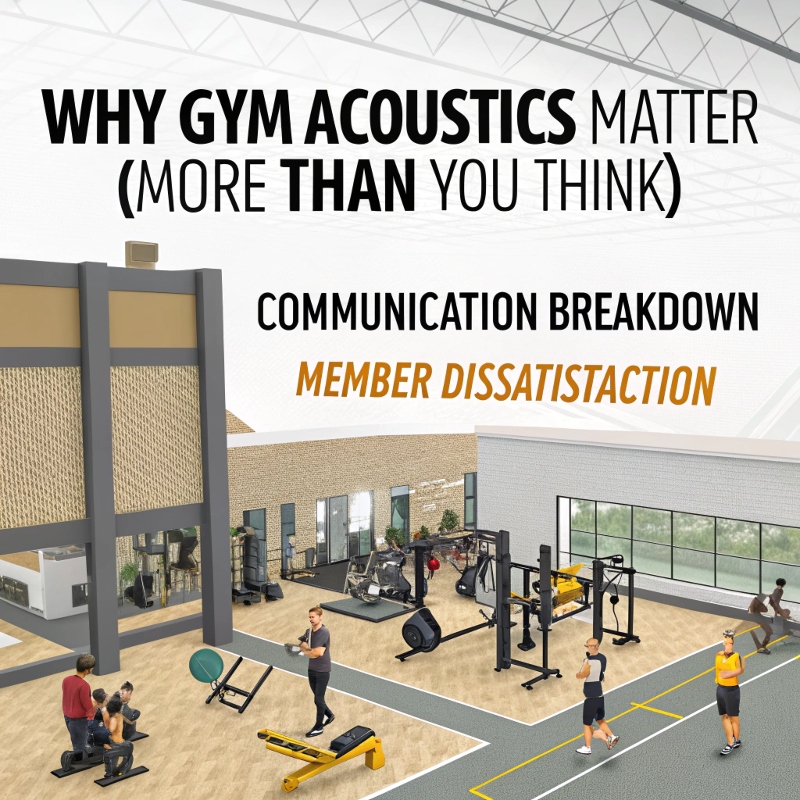
Beyond Iron and Iron: Why Gym Acoustics Make or Break Your Fitness Space
Let’s be honest: most people don’t walk into a gym thinking about sound waves. They’re focused on reps, sets, and maybe just surviving that HIIT class. But as a gym owner, architect, or designer, overlooking acoustic considerations when designing a gym is a critical mistake. Poor acoustics lead to member dissatisfaction, difficulty hearing instructors, increased perceived effort, and even safety issues. This guide dives deep into the essential acoustic design of a gym to create a space that’s both motivating and comfortable.
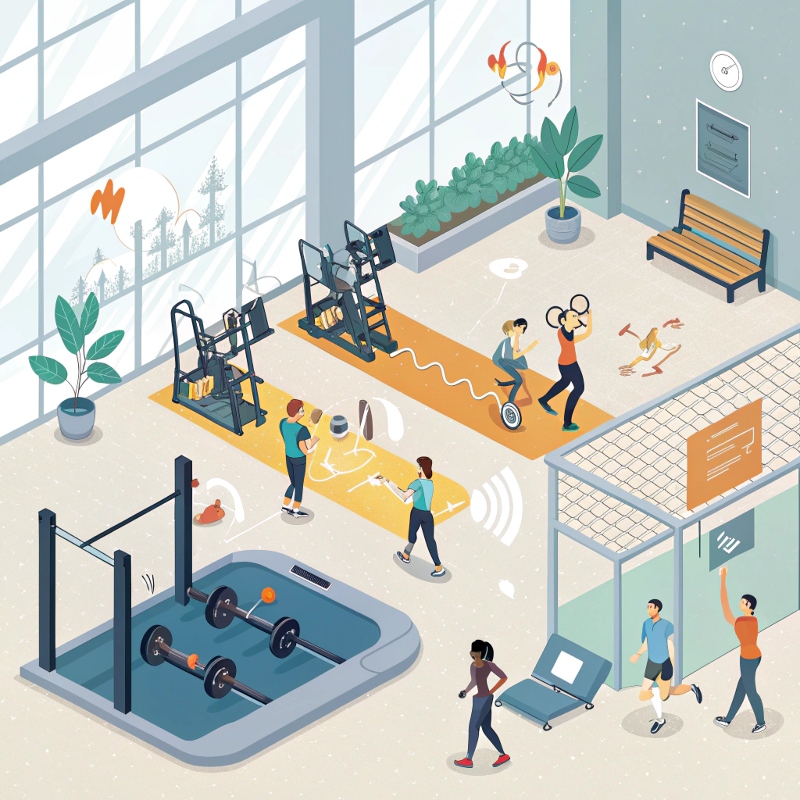
Why Gym Acoustics Matter (More Than You Think)
Gyms are inherently noisy environments. Combine clanging weights, pounding treadmills, blaring music, group class instructions, and general chatter, and you have a recipe for acoustic chaos. Uncontrolled noise leads to:
-
Communication Breakdown: Instructors struggle to be heard, members can’t understand cues, leading to frustration and potential safety risks.
-
Member Discomfort: Excessive noise and reverberation (echo) are physically fatiguing and mentally draining. Members won’t stay long in an unpleasant environment.
-
Increased Perceived Effort: High noise levels can subconsciously make workouts feel harder.
-
Sound Bleed: Noise from one area (e.g., a spin class) invades adjacent spaces (e.g., yoga studio), disrupting the experience.
-
Negative Brand Perception: A gym that feels chaotic and overwhelming due to noise feels unprofessional.
Investing in thoughtful gym acoustics treatment isn’t just about comfort; it’s about member retention, safety, and creating a premium experience. Improving acoustics in a gym is a core aspect of functional design.
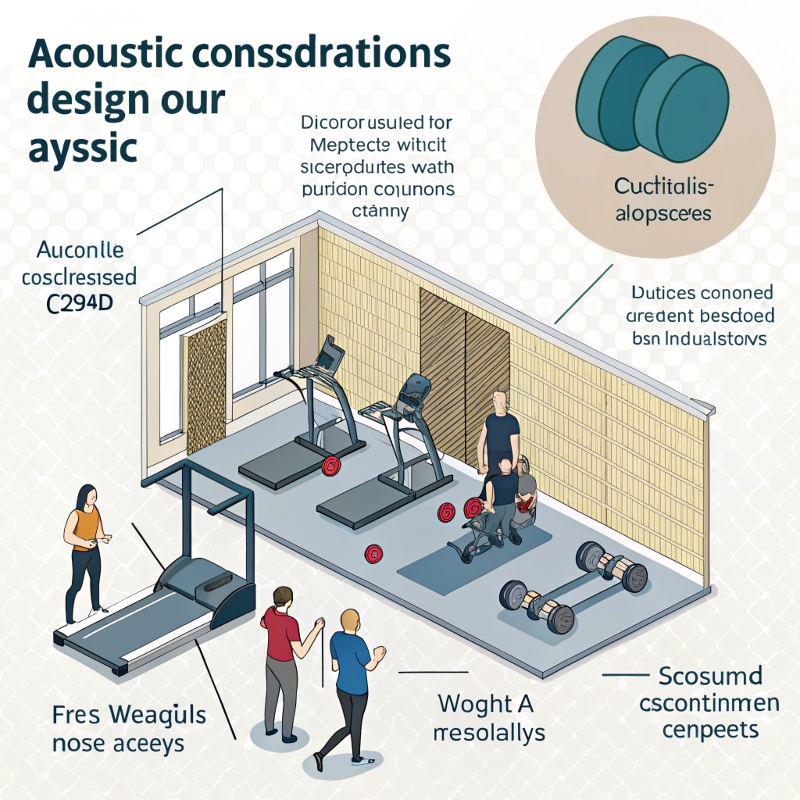
Key Acoustic Challenges in Gym Design
Gym spaces present unique hurdles for sound control:
-
Hard Surfaces Galore: Concrete floors, cinder block walls, large glass windows, and metal structures are standard. These materials reflect sound waves, causing reverberation and amplifying noise.
-
High Ceilings: Essential for clearance and ventilation, but they create large volumes where sound can bounce around for longer periods.
-
Diverse Noise Sources: Impact noise (weights dropping), airborne noise (music, voices, equipment motors), and vibration (treadmills) all require different control strategies.
-
Varied Activity Zones: The acoustic needs of a weight room differ vastly from a yoga studio, cycling room, or childcare area. Zoning is crucial.
-
HVAC Noise: Powerful air handling systems are necessary but can generate significant background noise if not acoustically treated.
Essential Acoustic Solutions for Gym Design
Tackling gym noise requires a multi-pronged approach targeting walls, ceilings, floors, equipment layout, and mechanical systems.
1. Gym Acoustic Panels: Your First Line of Defense
Acoustic panels for gym walls and ceilings are the most effective way to absorb reflected sound waves, drastically reducing reverberation time (how long sound lingers). Key considerations:
-
Material Matters: Look for high NRC (Noise Reduction Coefficient) rated panels. Durable, cleanable fabrics over mineral wool or fiberglass cores are standard for gyms. Fabric acoustic panels gym environments demand are specifically designed for high-traffic areas.
-
Strategic Placement: Where to place acoustic panels in gym spaces is critical. Prioritize:
-
Primary reflection points (opposite speakers, between parallel walls).
-
High ceilings, especially over noisy zones.
-
Walls surrounding group fitness studios.
-
Acoustic ceilings in gyms (suspended baffles or cloud panels) are highly effective for large volumes.
-
-
Durability & Safety: Panels must withstand potential impact and be easy to clean. Ensure they meet fire safety codes. Consider gym vertical acoustic baffles for high ceilings as an alternative to full ceiling coverage.
-
Aesthetics: Panels come in various colors and can be arranged creatively. Acoustic panel design gym integration should enhance the space, not detract from it.
2. Acoustic Gym Flooring Solutions
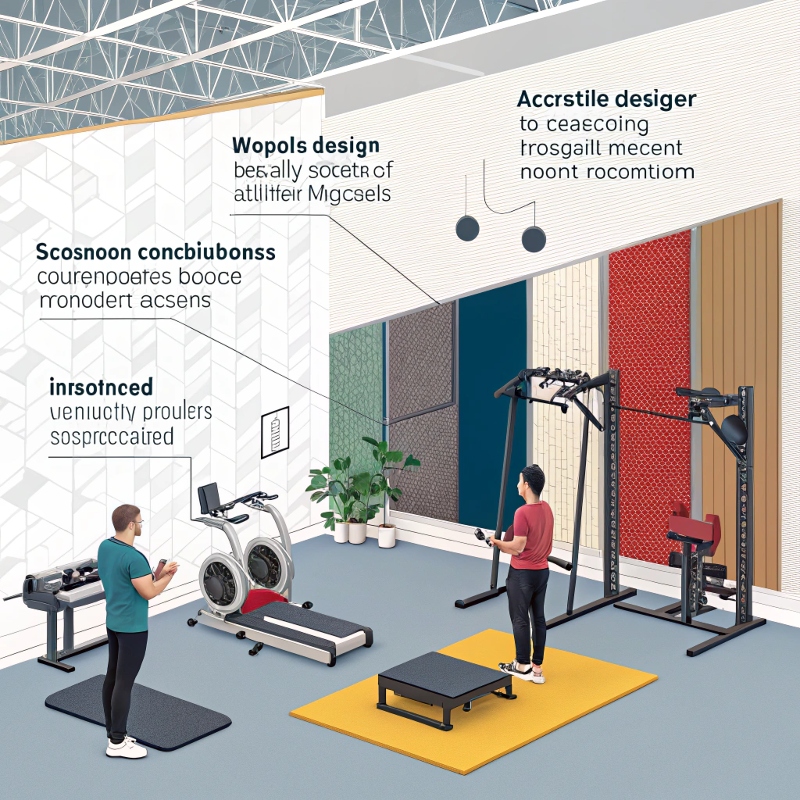
While often focused on impact protection and comfort, flooring plays a vital role in gym acoustics:
-
Impact Noise Reduction: Dense rubber flooring is excellent for absorbing the thud of dropped weights, protecting both the structure and ears below. Look for products specifically marketed as acoustic gym flooring or acoustic flooring for gyms.
-
Airborne Noise Absorption: While less effective than wall/ceiling panels, thick rubber mats and certain specialized sports flooring systems do contribute to overall sound absorption within the space itself.
-
Zoning: Use different flooring types (e.g., rubber in free weights, sprung wood in studios, carpet in lobbies) to help define acoustic zones.
3. Ceiling Strategies: Battling the High Volume
Acoustic ceilings in gyms are non-negotiable for effective sound control:
-
Suspended Acoustic Baffles: Gym vertical acoustic baffles hung perpendicular to the ceiling are highly effective in large spaces. They increase surface area for absorption without blocking HVAC airflow or sightlines.
-
Cloud Panels: Cloud acoustical ceiling gym installations (panels suspended horizontally) are excellent for absorbing sound reflecting between the floor and ceiling. They work well over specific zones like group fitness areas.
-
Absorptive Canopies: For very high ceilings over critical areas (like basketball courts), large fabric-wrapped absorptive canopies can be highly effective.
-
Avoid Hard Ceilings: Minimize exposed hard deck ceilings. If structural elements must be exposed, compensate heavily with wall panels and baffles.
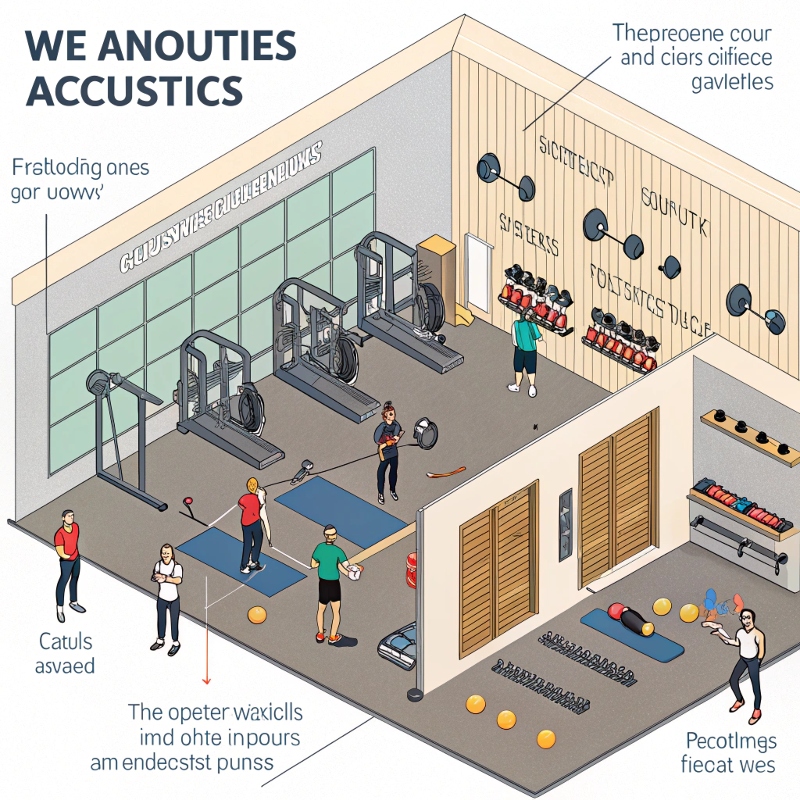
4. Zoning and Layout: Design with Sound in Mind
Smart spatial planning is a cost-effective acoustic tool:
-
Buffer Zones: Place quieter areas (stretching, offices, childcare) away from noisy zones (weights, cardio, group classes). Use corridors, storage, or lobbies as buffers.
-
Physical Separation: Solid walls (ideally with core insulation) are best between vastly different acoustic zones (e.g., weight room and yoga studio). Acoustic door gym entries are essential for these separations – solid-core doors with proper seals prevent sound leakage.
-
Equipment Grouping: Cluster noisy equipment together rather than spreading it out, making localized absorption more effective.
-
Barriers: Consider partial-height walls or heavy, acoustic fabric draped gym dividers (though permanent solutions are generally better than acoustic fabric draped temporary gym setups for long-term performance) to create visual and acoustic separation within large open areas.
5. Taming Equipment and HVAC Noise
-
Equipment Choice: Consider the acoustic footprint of equipment. Some manufacturers prioritize quieter operation. Features like the Gold’s Gym Intermix Acoustics 2.0 treadmill design specifically aim to reduce operational noise – a worthwhile consideration when selecting gear.
-
Equipment Maintenance: Well-maintained equipment runs quieter. Lubricate moving parts and tighten bolts regularly.
-
HVAC Silencing: Specify quiet fans and ductwork lined with acoustic insulation. Use duct silencers and ensure vents aren’t positioned to blow noise directly onto members. Isolate vibrating equipment (pumps, compressors) with resilient mounts.
Conclusion: Sound Investment for Success
Acoustic considerations when designing a gym are fundamental, not optional. Ignoring them creates a space that actively works against your members’ comfort, safety, and enjoyment. By strategically integrating gym acoustic panels, effective acoustic gym flooring, smart ceiling treatments like cloud acoustical ceiling gym solutions or gym vertical acoustic baffles, thoughtful zoning, and attention to equipment/HVAC noise, you transform a potentially chaotic echo chamber into a high-performing, welcoming fitness environment.
Prioritizing gym acoustics from the initial design phase is far more effective and cost-efficient than trying to retrofit solutions later. The result? Happier members, more effective workouts, better communication, and a distinct competitive advantage in the fitness marketplace. Make sound design a cornerstone of your gym.
FAQ: Gym Acoustics Demystified
Q1: How much do gym acoustic panels cost?
A: Costs vary significantly based on material, size, thickness, aesthetics, and installation complexity. Basic panels start around $5-$10 per sq ft, while premium or custom designs can be $20+ per sq ft. Getting quotes from recreation center and gym acoustic treatment services is best. While looking for acoustic panels cheap gym de echo options, prioritize durability and NRC rating over just the lowest price.
Q2: Can I install acoustic panels myself?
A: Yes, many panel systems are designed for DIY installation, especially wall-mounted options. Ceiling baffles or clouds often require more expertise, especially in high-ceiling applications. Always follow manufacturer instructions and safety protocols.
Q3: Where are the most important places to put acoustic panels in a gym?
A: Prioritize:
-
High walls and ceilings, especially over noisy zones (weights, cardio).
-
Primary reflection points (e.g., the wall opposite speakers in a group class).
-
Parallel walls in narrow areas to prevent flutter echo.
-
Around the perimeter of group fitness studios.
-
Acoustic panels for gym ceilings via baffles or clouds are highly effective.
Q4: Is rubber flooring enough for gym acoustics?
A: While excellent for impact noise reduction (protecting downstairs areas) and offering some airborne absorption, rubber flooring alone is insufficient for controlling overall reverberation in a typical gym. It should be combined with wall and ceiling absorption (gym acoustic panels) for comprehensive gym acoustics treatment.
Q5: What about asbestos in old gym ceilings?
A: Asbestos in acoustic gym ceilings was common in buildings constructed before the 1980s. If your gym has an older suspended tile or sprayed-on ceiling, DO NOT disturb it. Have it professionally tested. If asbestos is present, removal must be done by licensed abatement contractors following strict safety protocols. Modern acoustic ceilings in gyms use safe materials.
Q6: What are “gym vertical acoustic baffles”?
A: These are long, narrow acoustic panels for gym ceilings, hung vertically (like blades) from the structure. They are highly effective in large spaces with high ceilings because they absorb sound from multiple angles without blocking light or airflow from HVAC systems. They are a common solution for improving acoustics in a gym.
Q7: Are there acoustic solutions for temporary gym spaces or dividers?
A: Yes. Heavy, acoustic fabric draped gym dividers or gym divider curtain acoustic solutions can provide some separation and absorption. Portable freestanding acoustic panels for gym screens are also available. However, these are generally less effective than permanent installations and may not meet fire codes in all jurisdictions. For acoustic fabric draped temporary gym setups, ensure the fabric has a high NRC rating.
Q8: How do I know if my gym has poor acoustics?
A: Telltale signs include:
-
Excessive echo/reverberation (clapping produces a long ring).
-
Difficulty understanding instructors or conversations over background noise.
-
Members complaining it’s too loud or they leave with a headache.
-
Music from one area bleeding noticeably into others.
-
A general feeling of chaos and lack of focus.
ONE COMMENT
zoritoler imol
Hey there I am so delighted I found your blog page, I really found you by mistake, while I was looking on Askjeeve for something else, Anyways I am here now and would just like to say thank you for a remarkable post and a all round entertaining blog (I also love the theme/design), I don’t have time to browse it all at the moment but I have book-marked it and also added in your RSS feeds, so when I have time I will be back to read a great deal more, Please do keep up the great work.




Muhammad Zeeshan
Muhammad Zeeshan is an SEO expert specializing in link building (SaaS, Tech, Business, and Home Improvements). I am very passionate about search engine optimization, backlink building, and guest blogging. I can help you in attracting a new audience and in achieving a higher rating.